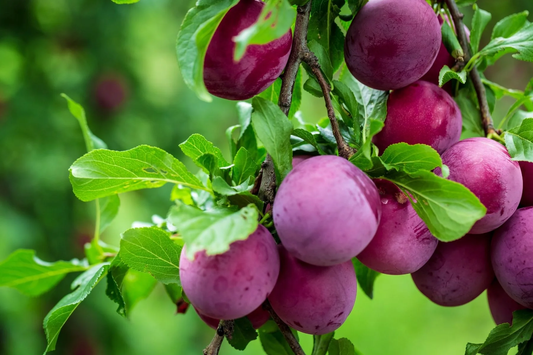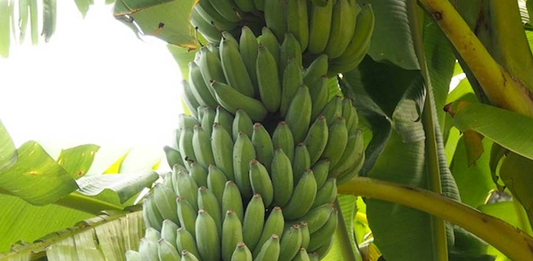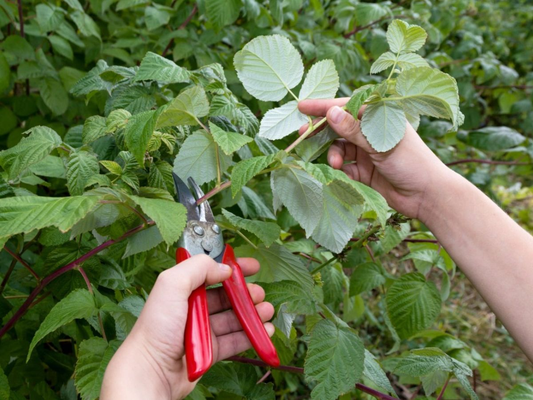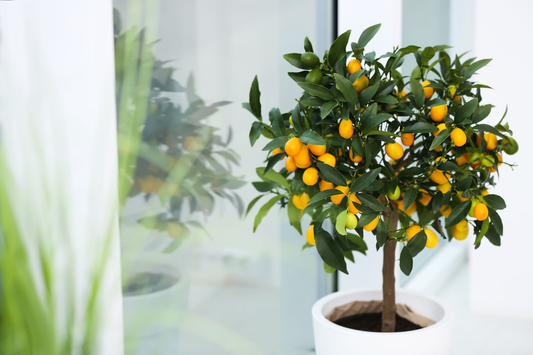How to Care for Seasonal Plants: A Gardener’s Cheat Sheet
Share
- 1. Introduction
- 2. Understanding Seasonal Plants
- 3. Benefits of Growing Seasonal Plants
- 4. Choosing the Right Seasonal Plants for Your Region
- 5. Soil Preparation for Seasonal Plants
- 6. Watering Requirements for Seasonal Plants
- 7. Fertilizing Seasonal Plants
- 8. Protecting Seasonal Plants from Pests and Diseases
- 9. Transitioning Seasonal Plants Between Seasons
- 10. Common Mistakes in Seasonal Plant Care and How to Avoid Them
- 11. FAQ - Frequently Asked Questions
1. Introduction
Seasonal plants are a cornerstone of gardening, bringing vibrant colors, textures, and fragrances to your outdoor or indoor spaces throughout the year. These plants, which are categorized based on their ability to grow and thrive in specific times of the year, are pivotal in creating dynamic and beautiful gardens. Understanding the unique characteristics and care requirements of seasonal plants is essential for achieving a flourishing garden that adapts to the ever-changing conditions of nature.
What Are Seasonal Plants?
- Plants that grow and complete their life cycle in a specific season, such as spring, summer, autumn, or winter.
- Grouped into three categories:
- Annuals: Complete their life cycle in one growing season (e.g., marigolds, zinnias).
- Biennials: Require two years to complete their life cycle (e.g., foxgloves, parsley).
- Perennials: Grow year after year but bloom in specific seasons (e.g., roses, lavender).
Why Seasonal Plants Require Specific Care
- Varied Growth Cycles: Different plants thrive in distinct temperatures, humidity levels, and daylight durations.
- Changing Soil Needs: Seasonal plants may require adjustments in soil pH, organic matter, and nutrients based on their growth stage.
-
Watering Requirements: For example:
- Summer plants need frequent and deep watering due to high evaporation rates.
- Winter plants require less water as they enter dormancy.
-
Protection from Environmental Extremes:
- Spring plants may need frost protection during unexpected cold snaps.
- Summer plants benefit from shading during intense heatwaves.
The Benefits of Proper Seasonal Plant Care
- Healthier Plants: Meeting seasonal requirements helps prevent stress and disease.
- Improved Aesthetics: Well-cared-for plants produce more flowers and lush foliage.
- Cost Savings: Proper care reduces the need for replacing plants and prevents unnecessary maintenance costs.
- Pollinator Attraction: Seasonal blooms attract bees, butterflies, and hummingbirds, enhancing biodiversity in your garden.
By understanding the specific needs of seasonal plants, gardeners can create thriving green spaces that evolve with the seasons. Whether you're growing vibrant summer flowers, hearty winter vegetables, or fragrant spring blooms, tailoring your care strategies to each season ensures a stunning, productive, and healthy garden all year long.

2. Understanding Seasonal Plants
Seasonal plants are a diverse group of flora that flourish during specific times of the year. Understanding their categories and life cycles is essential for selecting the right plants for your garden and providing them with the care they need to thrive. This section dives into the classifications, popular examples, and the importance of recognizing their unique growth requirements.
Definition and Categories
Seasonal plants can be categorized into three main types, each with distinct characteristics and lifecycles:
-
Annuals:
- Complete their entire lifecycle—germination, growth, flowering, and seed production—within one season.
- Require replanting each year.
- Examples: Marigolds, zinnias, and cosmos.
-
Perennials:
- Live for multiple years, often going dormant in unfavorable seasons and regrowing in their ideal season.
- Examples: Roses, lavender, and hostas.
-
Biennials:
- Require two years to complete their lifecycle, growing leaves in the first year and flowering in the second.
- Examples: Foxgloves, parsley, and hollyhocks.
Examples of Popular Seasonal Plants
Here are some seasonal plants that bring life and beauty to gardens throughout the year:
| Season | Popular Plants |
|---|---|
| Summer | Marigolds, petunias, zinnias |
| Winter | Pansies, snapdragons, violas |
| Spring | Daffodils, tulips, hyacinths |
| Fall | Chrysanthemums, asters |
Importance of Understanding Plant Lifecycles
Recognizing the lifecycle and specific needs of seasonal plants is crucial for their success. Here’s why:
- Better Planning: Helps you organize your garden for continuous blooms and productivity year-round.
- Improved Care: Allows you to provide tailored watering, fertilizing, and pruning schedules.
- Cost-Effective Gardening: Reduces plant loss and ensures a flourishing garden with minimal replanting.
- Enhanced Growth: Seasonal plants thrive when their lifecycle requirements are met, leading to healthier plants and better yields.

3. Benefits of Growing Seasonal Plants
Growing seasonal plants offers a variety of advantages for gardeners, ranging from enhancing the aesthetic appeal of your space to supporting biodiversity. By incorporating seasonal plants into your garden, you can enjoy year-round beauty while reaping ecological and financial benefits. Let’s explore these benefits in detail:
Aesthetic Appeal
- Dynamic Visuals: Seasonal plants provide vibrant colors and textures that change throughout the year, ensuring your garden is always eye-catching.
- Seasonal Themes: You can design your garden to reflect seasonal aesthetics, such as bright flowers in summer or warm-toned foliage in fall.
- Fragrant Blooms: Many seasonal plants, such as lavender or roses, add delightful fragrances to your garden.
Improved Pollination
- Attracting Pollinators: Seasonal plants like marigolds, sunflowers, and daisies are favorites for bees, butterflies, and hummingbirds.
- Supporting Biodiversity: By planting a variety of seasonal plants, you create a habitat for beneficial insects and wildlife year-round.
- Boosting Crop Yields: Enhanced pollination leads to better fruit and vegetable production in nearby edible gardens.
Cost-Effective Gardening
- Soil Health Maintenance: Rotating seasonal plants can prevent soil nutrient depletion and reduce the need for fertilizers.
- Fewer Replacements: Properly cared-for seasonal plants thrive in their ideal conditions, reducing plant loss.
- DIY Propagation: Many seasonal plants, such as geraniums and petunias, can be propagated, saving on replanting costs.
Customizable Garden Design
- Diverse Garden Layouts: Changing plants with the seasons allows for new garden designs throughout the year.
- Seasonal Displays: Create themed displays like spring flower beds, summer tropical corners, or fall harvest patches.
- Adaptability: Seasonal plants let you experiment with various species and color palettes to find what works best for your garden.
4. Choosing the Right Seasonal Plants for Your Region
Choosing the right seasonal plants for your region is essential to ensure healthy growth and vibrant gardens. By considering your local climate, soil type, and regional plant preferences, you can select plants that thrive in your specific environment. Let’s explore how to make the best choices for your garden.
Understanding Your Local Climate
-
USDA Plant Hardiness Zones:
- Use the USDA Plant Hardiness Zone Map to determine which plants are suitable for your area based on average annual minimum temperatures.
- For example:
- Zones 3–5: Cooler regions suitable for plants like pansies and snapdragons.
- Zones 8–10: Warmer climates ideal for tropical and heat-loving plants like hibiscus and succulents.
- Seasonal Temperature and Precipitation: Consider the seasonal variations in temperature and rainfall in your region.
- Sunlight Availability: Note the hours of daily sunlight, as some plants require full sun while others thrive in partial shade.
Consider Soil Type
-
Soil Composition: Match plants to your garden’s soil type:
- Sandy Soil: Drains quickly, ideal for succulents and lavender.
- Loamy Soil: Well-balanced and suitable for most plants, including roses and vegetables.
- Clay Soil: Retains water, ideal for moisture-loving plants like willows and irises.
- Test Your Soil: Conduct a soil test to check pH and nutrient levels to ensure compatibility with your chosen plants.
Top Seasonal Plants by Region
Below is a table highlighting popular seasonal plants for different regions in the U.S.:
| Region | Summer Plants | Winter Plants |
|---|---|---|
| Northeast US | Sunflowers | Holly |
| Southeast US | Impatiens | Camellias |
| Midwest US | Daylilies | Evergreens |
| Southwest US | Succulents | Ornamental Cabbage |
Key Considerations for Plant Selection
- Native Plants: Opt for plants native to your region as they are adapted to local conditions and require less maintenance.
- Microclimates: Take into account variations within your garden, such as shaded corners or windy areas, when selecting plants.
- Seasonal Rotation: Plan your garden to include a mix of plants that thrive in different seasons for year-round beauty and productivity.

5. Soil Preparation for Seasonal Plants
Preparing the soil is a crucial step for ensuring the healthy growth of seasonal plants. Proper soil preparation improves nutrient availability, promotes root development, and supports plant resilience throughout their growing season. Below are the key steps and tips for soil preparation:
Assessing Soil Quality
-
pH Testing:
- Use a soil testing kit to determine the pH level of your garden soil.
- Ideal pH ranges:
- Acidic soil (5.5–6.5) for plants like azaleas and blueberries.
- Neutral soil (6.5–7.5) for most vegetables and flowering plants.
- Adjust pH if necessary:
- Add lime to increase alkalinity.
- Add sulfur or organic matter to reduce pH.
-
Drainage:
- Check for proper drainage by observing how water behaves in your garden after heavy rain.
- In poorly drained soil, add sand or create raised beds to improve drainage.
Adding Organic Matter
-
Compost:
- Incorporate decomposed organic materials like kitchen scraps or yard waste to enrich the soil.
-
Manure:
- Use aged manure to provide nutrients and improve soil texture.
-
Other Soil Amendments:
- Add peat moss for water retention in sandy soils.
- Mix in perlite or vermiculite to enhance aeration in dense soils.
Tips for Each Season
-
Winter Plants:
- Apply a layer of mulch (2–3 inches thick) to insulate the soil and protect plant roots from freezing temperatures.
-
Summer Plants:
- Loosen the soil with a garden fork or tiller to improve aeration and allow roots to grow freely.
- Ensure soil retains moisture by adding organic matter like coconut coir.
6. Watering Requirements for Seasonal Plants
Proper watering is vital for the health and growth of seasonal plants. Each season presents unique challenges and requirements, making it essential to understand and adapt watering practices accordingly. Below are detailed guidelines on how to meet the watering needs of your seasonal plants effectively.
Seasonal Watering Needs
-
Summer Plants:
- Require consistent, deep watering to combat high evaporation rates and keep soil moist.
- Frequency: Water 2–3 times per week, depending on the heat and humidity levels.
- Tip: Check soil moisture by inserting your finger 1–2 inches into the soil; water if it feels dry.
-
Winter Plants:
- Require less frequent watering as evaporation rates are lower, and plants are often dormant.
- Frequency: Water every 10–14 days or when the topsoil feels dry.
- Tip: Avoid watering during freezing conditions to prevent root damage.
Methods of Watering
-
Drip Irrigation:
- An efficient method that delivers water directly to plant roots, minimizing evaporation and water wastage.
- Ideal for large gardens with seasonal plants requiring consistent hydration.
-
Avoid Overwatering:
- Too much water can lead to root rot and fungal diseases.
- Always allow the top layer of soil to dry out slightly before watering again.
Best Practices
-
Water Early in the Morning:
- Reduces water loss due to evaporation during the hotter parts of the day.
- Allows leaves to dry before nightfall, reducing the risk of fungal diseases.
-
Use Mulch:
- Apply a 2–3 inch layer of mulch around plants to retain soil moisture and regulate temperature.
- Organic mulch, such as straw or wood chips, is especially beneficial for seasonal plants.

7. Fertilizing Seasonal Plants
Fertilizing plays a key role in providing seasonal plants with the nutrients they need to thrive. By understanding the specific nutrient requirements of plants in each season and selecting the right fertilizers, you can promote healthy growth, vibrant blooms, and robust roots. Below are detailed guidelines on fertilizing seasonal plants effectively.
Understanding Nutrient Needs by Season
-
Summer Plants:
- Require fertilizers high in nitrogen to promote lush foliage and growth during their peak growing period.
- Example: Use fertilizers labeled 10-5-5 (higher nitrogen content).
- Tip: Combine with adequate watering for optimal absorption.
-
Winter Plants:
- Benefit from balanced fertilizers that support root development and maintain strength during dormancy.
- Example: Use fertilizers labeled 10-10-10 (balanced NPK ratio).
- Tip: Avoid over-fertilizing, as winter plants generally have slower nutrient uptake.
Types of Fertilizers
-
Organic Fertilizers:
- Derived from natural sources like compost, bone meal, or fish emulsion.
- Benefits: Improves soil health and promotes long-term fertility.
-
Synthetic Fertilizers:
- Manufactured with precise nutrient formulations for faster results.
- Drawback: May require careful application to avoid soil buildup.
-
Slow-Release Fertilizers:
- Gradually release nutrients over time, reducing the need for frequent applications.
-
Quick-Release Fertilizers:
- Provide immediate nutrients for plants in urgent need but may require more frequent applications.
Application Techniques
-
Avoid Over-Fertilization:
- Too much fertilizer can damage plant roots and lead to nutrient imbalances.
- Follow the application rates recommended on the fertilizer packaging.
-
Incorporate Fertilizer During Planting:
- Mix a small amount of fertilizer into the soil before planting seasonal plants.
- Tip: Use slow-release fertilizers to ensure a steady nutrient supply throughout the season.
8. Protecting Seasonal Plants from Pests and Diseases
Seasonal plants are often vulnerable to various pests and diseases, which can hinder their growth and reduce their aesthetic appeal. By understanding the common threats and adopting preventive measures, you can ensure the health and vitality of your plants throughout the year.
Common Pests
-
For Summer Plants:
- Aphids: Tiny insects that feed on plant sap, causing stunted growth and yellowing leaves.
- Spider Mites: Microscopic pests that create webbing and cause leaf discoloration.
- Whiteflies: Small white insects that weaken plants by sucking their sap.
-
For Winter Plants:
- Slugs and Snails: Mollusks that feed on tender leaves and stems, leaving behind noticeable holes and slime trails.
Prevention Methods
-
Companion Planting:
- Plant marigolds near seasonal plants to repel pests naturally.
- Use herbs like basil and rosemary as natural deterrents for certain insects.
-
Regular Pruning:
- Trim overgrown or diseased parts to improve airflow and reduce the likelihood of fungal infections.
- Dispose of pruned plant material properly to prevent the spread of pests or diseases.
Natural Pest Control Options
- Neem Oil: A natural insecticide effective against aphids, spider mites, and whiteflies.
- Insecticidal Soap: Safe and eco-friendly for eliminating soft-bodied pests like aphids.
- Beneficial Insects: Introduce ladybugs, lacewings, or predatory mites to naturally control pest populations.
Identifying and Treating Common Diseases
-
Powdery Mildew:
- Symptoms: White powder-like substance on leaves and stems.
- Treatment: Apply sulfur-based fungicides or neem oil to affected areas.
-
Root Rot:
- Symptoms: Wilting leaves and blackened, mushy roots due to overwatering.
- Treatment: Improve drainage, remove affected roots, and replant in fresh soil.

9. Transitioning Seasonal Plants Between Seasons
Successfully transitioning seasonal plants between seasons is crucial for maintaining a vibrant garden year-round. This process involves removing old plants, preparing the soil for new ones, and ensuring that the new plants are properly acclimatized to their new environment.
Removing Old Plants
-
Composting Dead Plants:
- Remove any dead or decaying plants to prevent the spread of pests or diseases.
- Compost healthy plant material for use in the next planting cycle, enriching the soil.
-
Clearing Space:
- Clear old plants to make space for new seasonal plants, ensuring they have room to grow.
Preparing Beds for New Plants
-
Rotating Crops:
- Rotate your crops to avoid soil depletion and prevent pest buildup.
- Change plant families each season to maintain healthy soil structure and nutrient balance.
Tips for Smooth Transitions
-
Gradual Acclimatization:
- Gradually introduce new plants to sunlight and temperature changes to avoid shock.
- Start by placing them in partial shade and gradually increase exposure as they adjust.
10. Common Mistakes in Seasonal Plant Care and How to Avoid Them
While caring for seasonal plants, gardeners often make a few common mistakes that can negatively affect plant health. By recognizing these mistakes and learning how to avoid them, you can ensure your plants thrive throughout the year.
Overwatering or Underwatering
-
Recognizing Symptoms:
- Overwatering: Yellowing leaves, root rot, and mold growth.
- Underwatering: Wilting, dry leaves, and brittle stems.
-
Solution:
- Ensure proper drainage and adjust watering based on seasonal needs.
- Use a moisture meter to monitor soil levels and prevent extremes.
Using the Wrong Fertilizer
-
Choosing the Correct Fertilizer:
- Match fertilizer type (e.g., high nitrogen for leafy growth in summer) with the specific needs of your plants.
- Adjust fertilization based on the growth stage: more during active growth, less during dormancy.
Planting Out of Season
-
Referencing Planting Calendars:
- Plant seasonal plants according to their ideal growing period for the best results.
- Consult regional planting calendars to match each plant with the correct season.
11. FAQ - Frequently Asked Questions
Here are answers to some of the most frequently asked questions about caring for seasonal plants:
-
How do I know when to plant seasonal plants?
- Check local planting calendars and the USDA Plant Hardiness Zone map to determine the best planting times for your region.
-
Can I grow seasonal plants indoors?
- Yes, many seasonal plants can be grown indoors with proper lighting, humidity control, and the right temperature.
-
How do I protect seasonal plants from frost?
- Use frost cloths or cloches to cover plants, and add a thick layer of mulch around the base to insulate the roots.
-
What is the best way to water seasonal plants?
- Water deeply and less frequently to encourage strong root growth. Avoid shallow, frequent watering which can cause shallow roots.
-
Are there any all-season plants I can grow?
- Yes, some perennials, such as lavender and rosemary, thrive year-round with proper care and environmental conditions.
Additional Resources
How to Grow Indoor Vegetables in Winter and Beat the Cold – XRoci
Best Low-Maintenance Houseplants for Stress-Free Gardening – XRoci
How to Grow Okra from Seeds: A Quick Guide for Home Gardeners – XRoci




